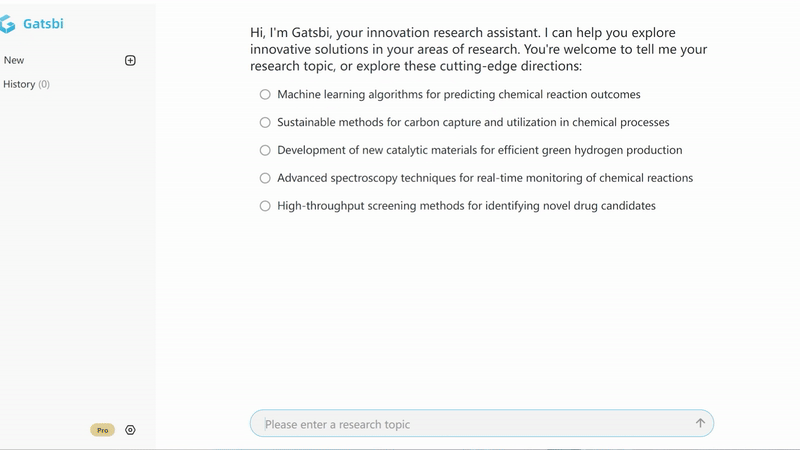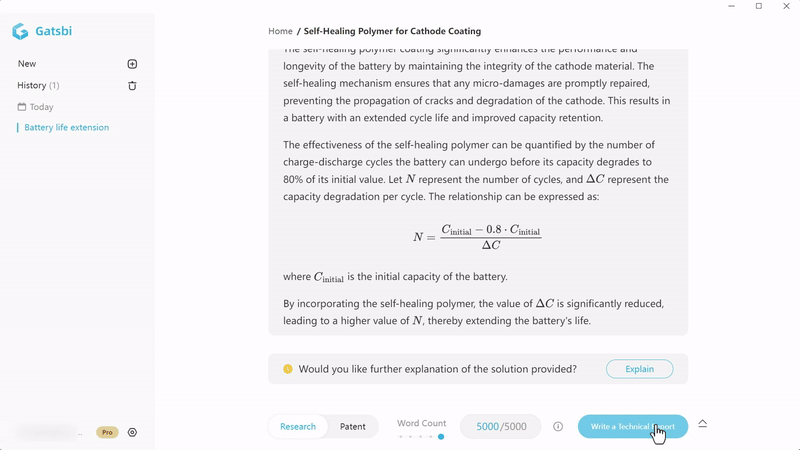Best AI Tools for Research Paper Writing 2025
In recent years, AI has become a powerful ally for researchers, streamlining tasks like writing, problem-solving, and data management. However, finding a single tool that covers the entire spectrum of research needs—from ideation and innovation to drafting and refining papers—can be challenging. Enter Gatsbi, a next-generation AI platform that stands out by seamlessly integrating creativity, research support, and academic writing tools in one place.
Gatsbi: Your One-Stop Research and Writing Powerhouse
1. TRIZ-Based Innovation Principles for Breakthrough Ideas
One of Gatsbi’s most distinctive features is its application of TRIZ (Theory of Inventive Problem Solving), a methodology often used by engineers and product developers to generate inventive solutions. By fusing TRIZ principles with advanced AI models like OpenAI and DeepSeek—and integrating the latest findings from Google Scholar—Gatsbi helps researchers tackle complex problems and develop genuinely novel ideas. Instead of just suggesting surface-level modifications, Gatsbi dives deeper, offering multiple creative angles and potential strategies for research design, experiments, and product development, all informed by the most current academic research.

2. End-to-End Academic Writing Support
Gatsbi doesn’t stop at ideation. Once you have your research concept in place, it steps in as a full-fledged writing assistant. Whether you’re drafting a paper from scratch or refining an existing manuscript, Gatsbi handles the technical aspects of the writing process—formatting, citation management, figure generation, and even layout. This means you can focus on the essence of your research instead of wrestling with formatting guidelines and citations.

3. Seamless Integration of References and Figures
Research papers often demand complex referencing and precise figure placement. Gatsbi automates these tasks by searching for and organizing relevant literature, generating accurate citations, and ensuring figures or tables are properly inserted and captioned. This frees you from countless hours of manual work and helps maintain a professional, polished look throughout your paper.
4. Built for Researchers Across Disciplines
Whether you’re in the humanities, natural sciences, or engineering, Gatsbi is designed to be versatile. Its multi-model architecture means it can parse diverse data sets and text formats, offering customized suggestions that respect disciplinary standards and conventions. By covering everything from brainstorming to final edits, Gatsbi supports researchers at every stage of their workflow.
How Gatsbi Compares to Other AI Academic Tools
While Gatsbi is comprehensive in both ideation and writing, there are plenty of other AI tools that excel in more specialized areas. Depending on your specific needs, you can use them alongside Gatsbi for an even more efficient research process.
1. Grammarly: Best for Grammar and Style Refinement
What It Does Well: Grammarly is renowned for improving grammar, punctuation, sentence structure, and tone. It also includes a plagiarism checker to ensure originality.
Limitations: It does not offer ideation or problem-solving features. Grammarly is ideal for polishing text once your core content and research direction are already set.
2. QuillBot: Best for Paraphrasing and Rewriting
What It Does Well: QuillBot specializes in paraphrasing and rewording text to improve clarity and avoid plagiarism. It’s an excellent tool for ensuring your writing is both original and fluent.
Limitations: QuillBot doesn’t support research ideation or citation management. It’s best used in conjunction with tools like Gatsbi that can help you with the broader aspects of research and writing.
3. Jenni AI: Best for Drafting and Organizing Research
What It Does Well: Jenni AI acts as a virtual research assistant that helps you draft and structure papers, offering suggestions based on your queries and the flow of your content.
Limitations: It doesn’t generate creative solutions to complex problems. If you need ideation or in-depth innovation, Gatsbi is more suitable.
4. Paperpal: Best for Real-Time Language Feedback
What It Does Well: Tailored for academic writing, Paperpal offers real-time feedback on grammar, sentence structure, and clarity, making it useful for final refinements.
Limitations: Paperpal focuses solely on language quality; it doesn’t handle ideation, figure generation, or citation tasks.
5. Zotero: Best for Citation Management
What It Does Well: Zotero helps collect, organize, and format references, integrating with word processors for easy citation insertion.
Limitations: It does not offer writing or ideation features. Zotero works best alongside a comprehensive tool like Gatsbi, which can handle the creative and technical facets of research writing.
6. Mendeley: Best for Collaborative Research
What It Does Well: Mendeley is both a reference manager and a collaborative platform, allowing researchers to share and annotate PDFs. It also suggests related articles, aiding literature discovery.
Limitations: Like Zotero, Mendeley does not provide ideation or writing support. Pair it with Gatsbi if you also need innovation insights and automated writing functionalities.
7. Writefull: Best for Academic Writing Refinement
What It Does Well: Writefull refines academic language, suggesting improvements in vocabulary, phrasing, and tone to align with scholarly standards.
Limitations: It doesn’t assist with brainstorming or solving research problems. Use Writefull for polishing text and Gatsbi for end-to-end research support.
8. Connected Papers: Best for Visualizing Research Connections
What It Does Well: Connected Papers creates visual maps of how academic papers are interlinked, helping you spot relevant literature and expand your literature review.
Limitations: It doesn’t aid in writing or ideation. Combine it with Gatsbi to leverage Gatsbi’s automated writing features and Connected Papers’ robust literature exploration.
9. Scite: Best for Citation and Claim Verification
What It Does Well: Scite checks the reliability of references by analyzing supporting and contradicting evidence, helping validate claims within your research.
Limitations: Scite doesn’t offer ideation or writing assistance. It’s best used in conjunction with a comprehensive writing and ideation tool like Gatsbi.
Conclusion
AI tools are transforming the research landscape by automating tasks, improving writing, and sparking creative solutions. Gatsbi leads the pack as an all-in-one innovation and writing assistant, offering both TRIZ-based ideation support and full-spectrum academic writing assistance. Other tools—such as Grammarly, QuillBot, and Paperpal—shine when it comes to refining language or checking grammar, while Zotero, Mendeley, and Connected Papers are excellent for managing and visualizing references.
Ultimately, the best combination depends on your project’s specific requirements. For those who need an end-to-end solution that covers brainstorming, writing, formatting, and citation management, Gatsbi stands out as a powerful, comprehensive choice. Pair it with more specialized tools as needed, and you’ll create a streamlined, highly efficient research process that lets you focus on what really matters—your ideas and discoveries.